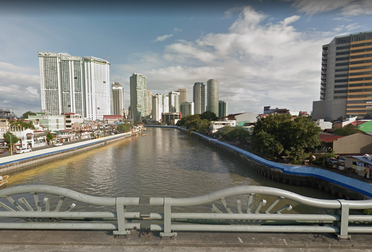
Framing Land: U.S. Colonial Postcards of the Philippines
The Philippines is an archipelago comprised of more than 7,000 islands and is home to diverse cultures, ethnicities, and languages. Before colonization, Indigenous communities practiced livelihoods focused around the interconnections of agriculture, kinship, politics, and cosmology. When explorer Ferdinand Magellan encountered the islands in 1521, claiming them and their people as subjects of King Felipe II of Spain (Las Islas Filipinas), these practices were dramatically disrupted.
Nearly 400 years of Spanish colonial rule transformed the Philippines’ people and landscape, upending many Indigenous peoples’ livelihoods. Spanish became the new language of governance. Local traditions that honored the land and ancestors were deemed incompatible with the Catholic religion the population was forced to adopt. Once rich in biodiversity, the landscape was transformed by plantation agriculture, mining, urbanization, and deforestation to serve the colony’s needs.

Map of the Philippines
Source: Wikipedia and Natural Earth Data

Portrait of Ferdinand Magellan, 1581
1810
Unknown artist
Engraving
Source: U.S. Library of Congress

Portrait of King Felipe II of Spain
Milan, Italy, 1549-1550
Tiziano Vecellio (1490-1576)
Oil on Canvas
Source: Museo del Prado (P000452)
In 1898, the Philippines became a U.S. territory as part of a settlement at the end of the Spanish-American War. From one colonial rule to another, the Philippine people would not experience political independence for another half-century. Between 1899 and 1949, the American military, private corporations, urban planners, and other interest groups arrived with an agenda to modernize the Philippines — transforming their newly acquired land “in their image.”
Between 1898 and 1916, Americans engaged in a full-scale effort to transform the Philippine landscape. Already dwindling forests were cut to expand cities further and build resort destinations for colonial officers and their families. Open waterways were filled with ships and barges. Buildings inspired by Euro-American architecture replaced Indigenous Pilipino and old Spanish-influenced edifices. Public parks signaled the adoption of American-style green spaces, while sidewalks and tree-lined boulevards flanked emerging networks of modern streets.

Portrait of William McKinley
U.S. President, 1897-1901
1897
Frances Benjamin Johnston (1864-1952)
Photograph
Source: U.S. Library of Congress
During the early years of the American occupation, picture-postcard technology was in full swing. Photographers captured images of this newly acquired island territory of “exotic” people and places. Postcards were an efficient tool for spreading modernization narratives because of their popularity and use of photos to depict “reality.” However, these images are a constructed reality. They contain and constrain people, places, and time within a frame, telling only part of the story.
This exhibit focuses on places that American occupiers captured and reproduced in postcards — framing the land and the American image of the Philippines. Americanized spaces are idealized and represent “modern” urban development. Their central focus in images emphasizes their importance. Contemporary images accompany the postcards in this exhibit to bring their depictions of the Philippines into the present and provide a glimpse into how these spaces changed 100 years after their original circulation.
We invite you to think about landscapes as not being neutral, but as spaces that different groups interpret with different agendas. In the pre-colonial Philippines, land was a place that sustained the living and was a sacred home for ancestors. How did Spanish, then American colonizers conceptualize land? As a viewer of this exhibit, how would you interpret these postcards?
-
What is the postcard’s focus?
-
What fades into the background?
-
What is outside the frame?
-
What differences are there?
-
How do you feel about the differences?
This exhibit was curated to complement Joan Carling's appointment as Chair of the 2021 Weissberg Program in Human Rights and Social Justice at Beloit College. Carling is an indigenous Filipino human rights activist and environmentalist who has defended native and marginalized peoples' rights for over two decades.
Exhibit curated by


























